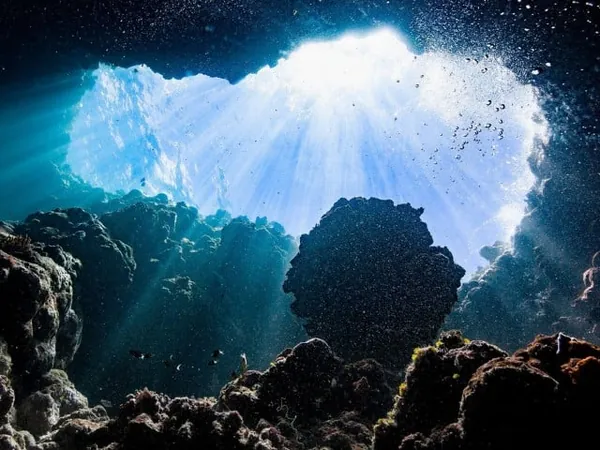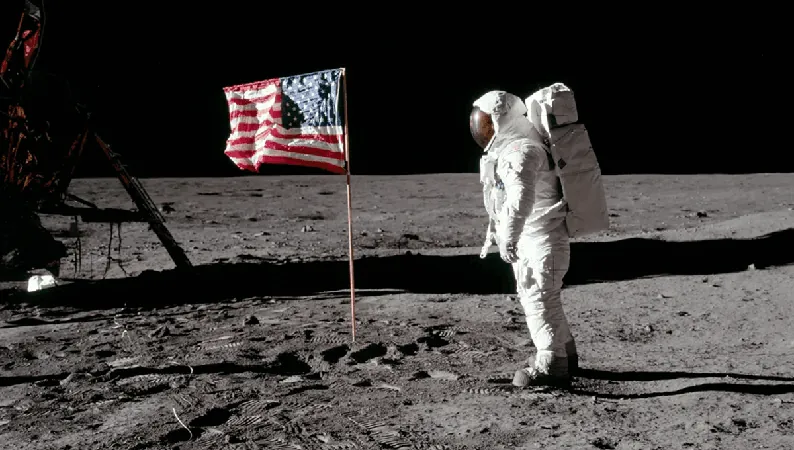
Astounding Discovery: Hubble Captures Stunning First Images of Star Cluster Mergers in Dwarf Galaxies!
2025-04-09
Author: Yu
A Game-Changing Revelation in Astronomy
In an exciting breakthrough, a new study has unveiled the first direct images of merging star clusters nestled within the cores of dwarf galaxies. This remarkable detection offers compelling evidence for the long-debated process of star nucleus formation in these diminutive galaxies, as detailed in a paper published in the prestigious journal Nature.
Dwarf Galaxies: The Universe's Cosmic Building Blocks
Dwarf galaxies, the most ubiquitous types of galaxies in the cosmos, contain significantly fewer stars than massive galaxies like our Milky Way—often just 100 times fewer or even less! Understanding how these miniature galaxies form is crucial for unraveling the mysteries of galactic evolution.
The Mystery of Nuclear Star Clusters Unveiled
A significant fraction of dwarf galaxies hosts intriguing compact star clusters at their centers, composed of hundreds of thousands to millions of stars. These nuclear star clusters are the densest stellar systems known in the galaxy. For decades, scientists have debated how these extreme objects come to be.
The Theoretical Recipe: Merging Globular Clusters
The prevailing theory posits that nuclear star clusters arise from the merger of smaller star clusters, called globular clusters, which drift toward the galaxy's center. Until now, however, no direct observation of this merging phenomenon had been documented. That is, until this eye-opening study.
Witnessing the Unexpected: Surprise Features in Observations
While analyzing a treasure trove of data from nearly 80 dwarf galaxies captured by the Hubble Space Telescope, a team of ten researchers from the international MATLAS collaboration, led by Prof. Francine Marleau from the University of Innsbruck, stumbled upon something extraordinary. Several galaxies exhibited peculiar nuclear star clusters, with some showcasing clusters huddled together and others displaying faint streams of light emanating from their cores.
“We were astonished by the unexpected streams of light around the galaxies' centers, as nothing like this has been seen before,” shared lead researcher Mélina Poulain from the University of Oulu, Finland.
A Deeper Dive: Confirming the Findings Through Simulations
Further analysis revealed that these features share properties akin to known globular clusters within dwarf galaxies, hinting that these observations could represent the nuclear star cluster’s growth through the dramatic consumption of globular clusters.
To validate these findings, high-resolution simulations were conducted, spearheaded by Dr. Rory Smith at the Universidad Técnica Federico Santa María in Santiago, Chile. These simulations experimented with various mergers involving star clusters of differing masses and dynamics, mirroring the real-life stellar collisions observed.
Astronomy's Next Frontier
This groundbreaking study not only sheds light on the formation of nuclear star clusters but also opens up new avenues for understanding the intricate processes of galaxy evolution. As we peer deeper into the cosmos, each discovery brings us closer to comprehending the universe's vast and enigmatic tapestry.




 Brasil (PT)
Brasil (PT)
 Canada (EN)
Canada (EN)
 Chile (ES)
Chile (ES)
 Česko (CS)
Česko (CS)
 대한민국 (KO)
대한민국 (KO)
 España (ES)
España (ES)
 France (FR)
France (FR)
 Hong Kong (EN)
Hong Kong (EN)
 Italia (IT)
Italia (IT)
 日本 (JA)
日本 (JA)
 Magyarország (HU)
Magyarország (HU)
 Norge (NO)
Norge (NO)
 Polska (PL)
Polska (PL)
 Schweiz (DE)
Schweiz (DE)
 Singapore (EN)
Singapore (EN)
 Sverige (SV)
Sverige (SV)
 Suomi (FI)
Suomi (FI)
 Türkiye (TR)
Türkiye (TR)
 الإمارات العربية المتحدة (AR)
الإمارات العربية المتحدة (AR)